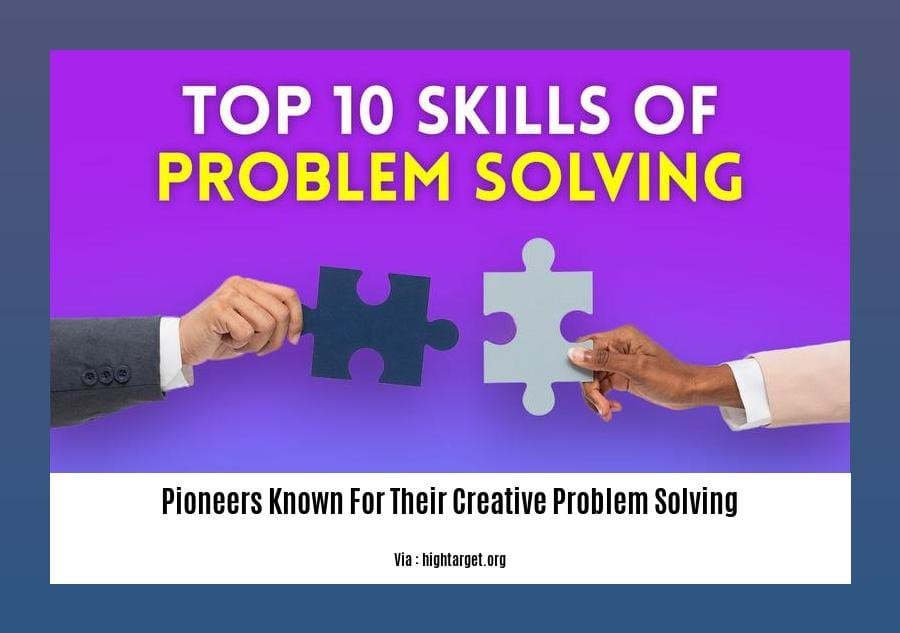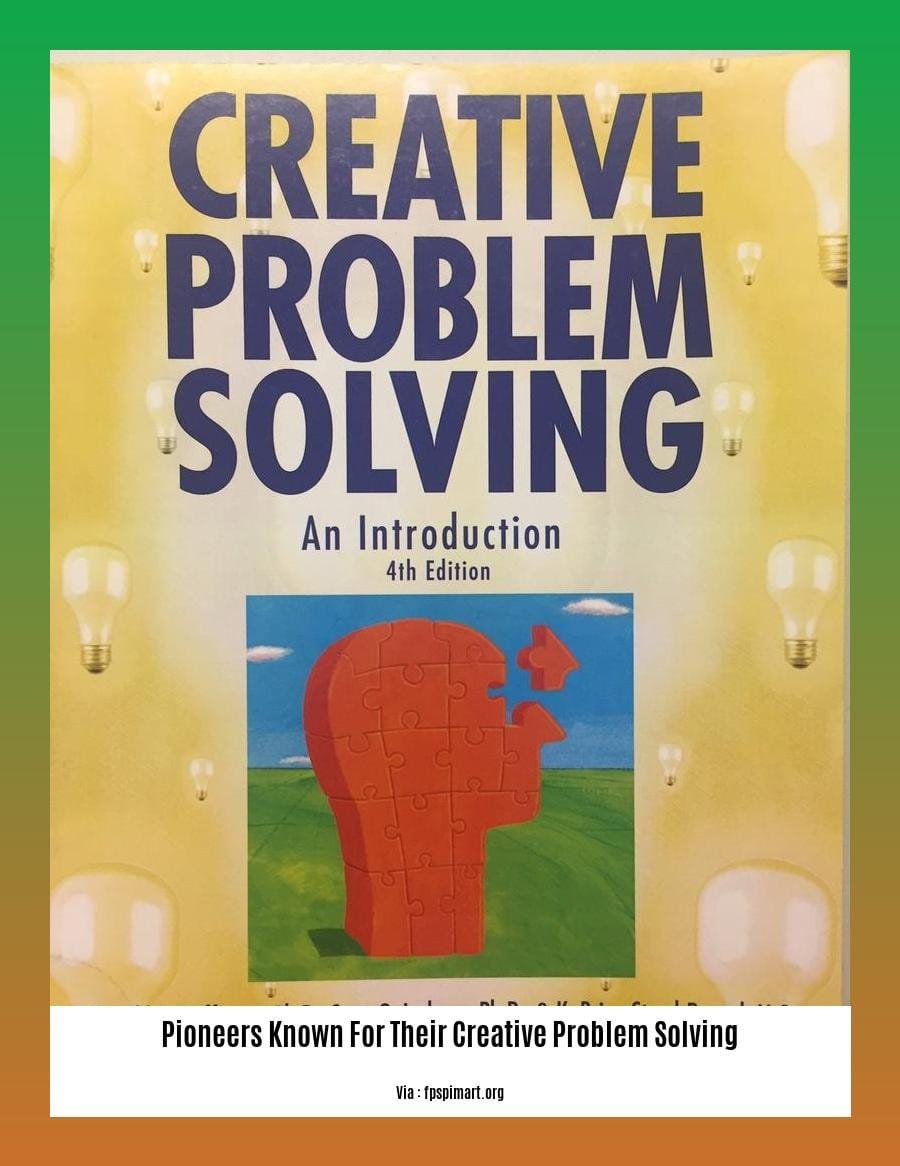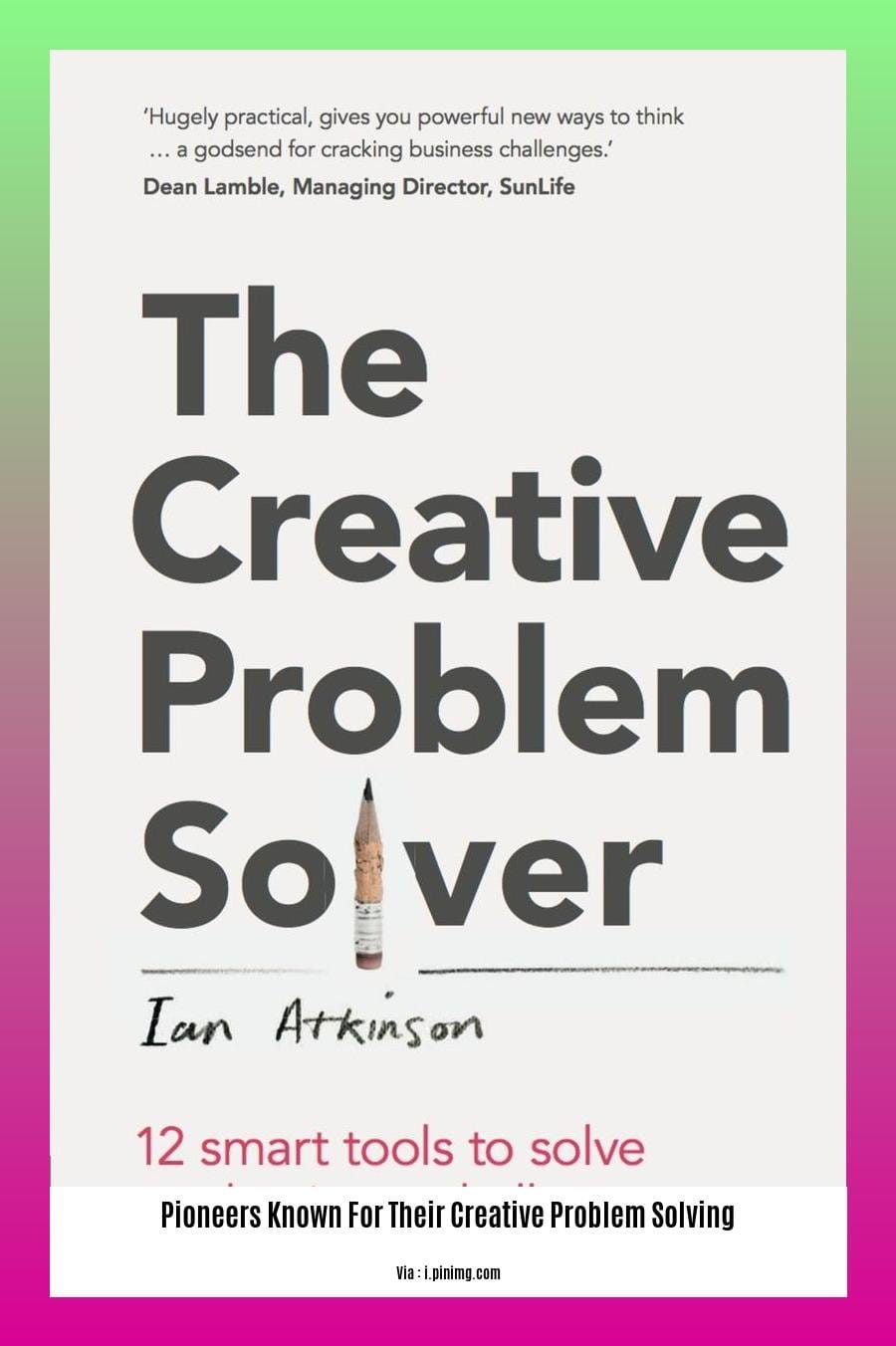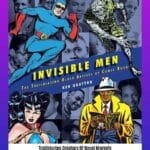Pioneers Known for Their Creative Problem-Solving: Historical Innovators Transforming Challenges into Solutions provides a comprehensive examination of the individuals whose groundbreaking contributions to creative thinking and problem-solving methodologies have left a lasting impact on our world. This article delves into the motivations, techniques, and achievements of these trailblazing figures, exploring their impact on various fields throughout history, including education, science, technology, and society.
Key Takeaways:

- Creative problem solving is a structured approach that emphasizes brainstorming, divergent thinking, and collaboration.
- Alex Osborn and Sid Parnes developed the Osborn-Parnes Creative Problem Solving Process.
- The CPS process involves six steps: objective finding, fact finding, problem analysis, idea generation, solution evaluation, and implementation and follow-up.
- Benefits of creative problem solving include fostering innovative thinking, collaboration, structured approach, and improved communication.
Pioneers Known for Their Creative Problem-Solving
Throughout history, countless pioneers have emerged, renowned for their exceptional problem-solving abilities. Their innovative solutions have transformed challenges into breakthroughs, reshaping our understanding of the world.
One such pioneer is Leonardo da Vinci, the Renaissance polymath. His keen observation and insatiable curiosity led him to develop groundbreaking inventions, including the flying machine and the submarine.
Another is Marie Curie, the physicist and chemist. Her relentless pursuit of knowledge led to the discovery of radium and polonium, revolutionizing our understanding of radioactivity.
Albert Einstein, the physicist, is celebrated for his theory of relativity. His groundbreaking work on space and time has had a profound impact on modern physics, and continues to inspire scientists today.
These pioneers share common traits: an unwavering belief in their ideas, a willingness to challenge conventional wisdom, and an ability to see problems from fresh perspectives.
Their stories serve as a testament to the power of creative problem-solving and the transformative impact it can have on the world. By embracing their innovative spirit, we can unlock our own potential and contribute to the advancement of knowledge and progress.
Steps to Embracing Creative Problem-Solving
- Define the problem clearly. Identify the root causes and underlying assumptions.
- Gather diverse perspectives. Seek input from different viewpoints and expertise.
- Brainstorm solutions. Generate a wide range of ideas, no matter how unconventional.
- Evaluate solutions. Assess the strengths, weaknesses, and feasibility of each idea.
- Select and implement the best solution. Develop a plan to put your chosen solution into action.
Benefits of Creative Problem-Solving
- Promotes innovation and breakthrough ideas.
- Encourages teamwork and collaboration.
- Improves communication and understanding.
- Builds resilience and adaptability.
- Empowers individuals and organizations to overcome challenges.
The innovators hailed for novel solutions are the pioneers celebrated for their unconventional approaches. These creative lateral thinkers who pioneered non-traditional methods have consistently used their unique problem-solving skills to break new ground.
Pioneers Known for Their Creative Problem-Solving Brain
Pioneers Known For Their Creative Problem Solving Brain have made groundbreaking contributions to the field of problem-solving. Their unique abilities to generate novel solutions have left a lasting legacy, inspiring countless others to approach challenges with creativity and innovation. Let’s explore some of these remarkable individuals and their innovative approaches:
Key Takeaways:
- Alex Osborn: Developed the brainstorming technique and the Osborn-Parnes Creative Problem Solving Process.
- Sid Parnes: Co-creator of the Osborn-Parnes Creative Problem Solving Process and a renowned expert in creative thinking.
- Edward De Bono: Inventor of lateral thinking, a technique that encourages the exploration of unconventional solutions.
- Charles Kettering: Known for his innovative work in automobile engineering, including the development of the electric starter.
- Grace Hopper: A computer scientist and US Navy rear admiral who played a vital role in the development of the first computer compiler.
Steps in the Creative Problem Solving Process:
- Objective Finding: Define the problem and establish clear objectives.
- Fact Finding: Gather relevant information and explore the issue from various perspectives.
- Problem Analysis: Identify the underlying causes and potential barriers.
- Idea Generation: Engage in brainstorming and other techniques to generate a wide range of solutions.
- Solution Evaluation: Evaluate the ideas, identify their strengths and weaknesses, and select the most promising ones.
- Implementation and Follow-up: Develop a plan to implement the chosen solutions and monitor their effectiveness.
Types of Creative Problem Solving Techniques:
- Brainstorming: A classic technique that involves generating a large number of ideas without judgment or criticism.
- Lateral Thinking: A method that challenges assumptions and encourages the exploration of unconventional perspectives.
- TRIZ (Theory of Inventive Problem Solving): A systematic approach that combines scientific analysis with creative thinking.
- Design Thinking: A human-centered approach that focuses on understanding user needs and developing solutions that meet those needs.
Benefits of Creative Problem Solving:
- Enhances innovation and the development of novel solutions.
- Fosters collaboration and teamwork.
- Improves communication and understanding of complex issues.
- Reduces biases and promotes a more objective approach to problem-solving.
Most Relevant URL Source: Creative Problem Solving – Finding Innovative Solutions to Challenges
Pioneers Of Education And Their Contributions
In the annals of education, there are luminaries whose innovative solutions transformed the landscape of learning. These Pioneers Of Education And Their Contributions continue to inspire and shape modern-day education practices.
Friedrich Froebel: The Father of Kindergarten
- Recognized the innate curiosity and creativity of children.
- Established the first kindergartens, emphasizing free play and self-expression.
- Influenced the development of early childhood education worldwide.
Horace Mann: The Advocate for Public Education
- Championed the establishment of free and accessible education for all children.
- Founded the first teacher training schools, recognizing the importance of qualified educators.
- Known as the “Father of American Education.”
Charlotte Mason: The Pioneer of Home Education
- Believed in the power of nature, literature, and hands-on experiences in education.
- Developed a method of teaching that fostered a lifelong love of learning.
- Her ideas continue to influence homeschooling practices today.
Margaret Bancroft: The Champion for Special Needs Education
- Founded the first private boarding school for children with special needs.
- Developed innovative methods for teaching children with various disabilities.
- Paved the way for the recognition and accommodation of diverse learning needs.
Jean Piaget: The Master of Cognitive Development
- Studied how children learn and develop their thinking skills.
- Developed the theory of cognitive development, which proposed four distinct stages of intellectual growth.
- His theories have had a profound impact on educational practices and child psychology.
Key Takeaways:
- Pioneers in education recognized the unique qualities of children and advocated for their holistic development.
- They developed innovative methods that emphasized hands-on experiences, self-expression, and lifelong learning.
- Their contributions have shaped the foundation of modern education systems worldwide.
Citation:
TeachHUB: Top 12 Pioneers in Education

FAQ
Q1: Who were some notable pioneers in creative problem solving and what were their contributions?
A1: Alex Osborn and Sid Parnes developed the Osborn-Parnes Creative Problem Solving Process, which remains a valuable approach to problem-solving today.
Q2: What are the steps involved in the Creative Problem Solving Process (CPS)?
A2: The original CPS process consists of six steps: Objective Finding, Fact Finding, Problem Analysis, Idea Generation, Solution Evaluation, and Implementation and Follow-up.
Q3: What are the benefits of using creative problem solving?
A3: Creative problem solving encourages innovative thinking, fosters collaboration, provides a structured approach to problem-solving, and improves communication and understanding of complex issues.
Q4: What is the link between creativity and mood?
A4: Positive moods with approach motivation and promotion focus (e.g., joy, hope) are associated with higher creativity, while negative moods with avoidance motivation and prevention focus (e.g., fear, anxiety) are linked to lower creativity.
Q5: What is the role of education in fostering creativity?
A5: Pioneers in education such as Friedrich Froebel, Horace Mann, Charlotte Mason, Margaret Bancroft, and Jean Piaget emphasized the importance of creativity and free expression in learning, and developed innovative methods to cultivate these qualities in students.
- Crypto Quotes’ Red Flags: Avoid Costly Mistakes - June 30, 2025
- Unlock Inspirational Crypto Quotes: Future Predictions - June 30, 2025
- Famous Bitcoin Quotes: A Deep Dive into Crypto’s History - June 30, 2025
















